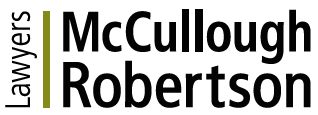Federal Budget 2022
For a pre-election budget, there were surprisingly few significant new tax reduction measures when compared with recent years. The most significant measure, the temporary fuel excise cut, was widely expected. The excise is halved to 22c per litre, which is greater than pre-budget estimates. It remains to be seen how effective the ACCC will be at monitoring and enforcing the price reduction at the bowser.
A measure that has had little publicity, but may have a significant impact, is the additional funding of over $650m to the ATO’s Tax Avoidance Task Force over the next two years, on top of the already $1 billion in prior budgets. This measure is directed at not just multinationals, but also private groups and trusts. It is expected to raise over $2 billion across the forward estimates – which is a surprising figure, given the largely compliant nature of most Australian taxpayers. There is no doubt that the discretionary trust measures that we have recently discussed will be hugely impacted by this measure. This greatly raises the risk profile for all clients with discretionary trusts and makes guidance on this issue even more important.
Many of our clients in the agribusiness and emission reduction sectors will be interested in the new patent box measures. Following on from last year’s biotech measures, this is a welcome sign for the future of Australia’s tax competitiveness on the global stage.
There are a number of additional welcome measures in NDIS and affordable housing, as well as child care measures that will provide some further relief for families.
The measures are all sound, responsible and important. However, entirely absent from this Budget is any acknowledgement of the need for broader, systemic tax reform. To the contrary, the additional funding provided to the ATO’s Task Force more likely indicates a continuation of a taxation system that no longer meets the investment needs of a 21st century society.
Here are our first impressions of some of the more surprising tax-related measures.
- Mission critical: helping critical minerals projects become market ready
- Expansion to the employee share scheme provisions
- The ATO gets a pay rise
- Extension of patent box measures
- Who gives a dam? We do
- Hosing down the housing crisis
- Ongoing road to recovery for businesses impacted by COVID-19
- Supporting small businesses to upskill and upgrade tech
- Flexibility for retirees: 50% temporary reduction on superannuation pension drawdowns extended
- Cost of living tax offset
- Modernisation of pay as you go (PAYG) systems
- Smarter reporting of Taxable Payments Reporting System data
- Medicare levy low-income threshold increased
- Cheers to that: exemption for breweries and pubs from licensing requirements
- Frydenberg gets fast and furious: a temporary cut to fuel excise
- Miscellaneous matters of interest to us
Mission critical: helping critical minerals projects become market ready
The Budget has accounted for $250.5 million over the next five years to assist early stage Australian critical minerals projects reach market readiness.
This amount is apportioned into:
- $200 million for the Critical Minerals Accelerator Initiative which will provide grants to assist Australian critical minerals’ producers advance projects through the planning, design, pilot and demonstration phases; and
- $50.5 million for the establishment of a virtual Critical Minerals Research and Development Centre to build Australian intellectual property in critical minerals processing.
What this means
Australia’s resources companies are prominent in the development of new critical minerals markets. Given recent national security concerns in this space, the Federal Government is looking to secure Australia as a reliable partner for both local and global businesses that require critical minerals.
Although this measure is a relatively minor expenditure in the scheme of this year’s Budget, it may prove critically important in developing the burgeoning industry.
Expansion to the employee share scheme provisions
The Federal Government has announced an expansion to the employee share scheme provisions and a reduction in red tape in an attempt to allow Australian companies to attract and retain talent. As part of the amendments, regulatory requirements for offers to independent contractors will be removed where they do not have to pay for their interests. Where employers make larger offers in connection with employee share schemes in unlisted companies, participants can invest up to:
- $30,000 per participant per year, accruable for unexercised options for up to 5 years, plus 70 per cent of dividends and cash bonuses; or
- any amount, if it would allow them to immediately take advantage of a planned sale or listing of the company to sell their purchased interests at a profit.
The ATO gets a pay rise
Multinationals, large public and private groups, trusts and high wealth individuals continue to hold the ATO’s compliance focus, with the announcement that approximately $325 million will be provided to the Tax Avoidance Taskforce in the 2024 and 2025 financial years.
This funding follows the $1 billion provided across the 2020 to 2023 financial years, and in fact represents an increase in funding.
What this means
This continued and increased funding aligns with our recent experience of the ATO compliance activity and sets a somewhat ominous outlook for years to come. Over the past several months we have witnessed an apparent uptake in the commencement of compliance activity, and critically a staunch adherence to the non-binding guidelines and material produced by the ATO at the potential expense of the legislation and commercial realities.
It will be a particularly interesting period as the Commissioner has shown his willingness to go potentially above and beyond the law in stating his opinion about the operations of family discretionary trusts (see our article on the Commissioner’s position here).
Extension of patent box measures
The Federal Government will provide concessional treatment for corporate taxpayers who commercialise their eligible patents linked to agriculture and veterinary chemical products and eligible Plant Breeder Rights.
Eligible corporate income will be subject to an income tax rate of 17% for Plant Breeder Rights and patents granted or issued after 29 March 2022 and for income years starting on or after 1 July 2023.
Income will be taxed at the concessional rate to the extent the research and development of the innovation occurred in Australia. This expansion is aimed at offering a competitive tax rate for profits generated from eligible Australian owned and developed patents with an aim to support the commercialisation of innovation in Australia.
Furthermore, the expansion will provide concessional tax treatment to corporate taxpayers who commercialise patented technologies which have the potential to lower emissions. Technology, including the technology set out in the 120 technology areas listed in the Federal Government’s 2020 Technology and Investment Roadmap Discussion Paper or included as priority technologies in the Federal Governments 2021 and future annual Low Emissions Technology Statements will be included provided the technology is considered to reduce emissions.
What this means
The expansion of the patent box concessions is a good opportunity for our clients that are already developing new technologies both in the agriculture sector and the low emission sector to benefit from the activities they are already investing in. However, it remains to be seen how many companies are able to patent their innovations and extend the benefit to their business to the tax concessions. The Budget acknowledges that the savings to agriculture companies will only be an estimated $30 million which is minimal when the funds spent by companies in Australia developing new technologies in this sector are considered.
This adds to the existing patent box regime for biotech, and hopefully heralds an increased investment in new technology, which is critical for Australia’s global competitiveness.
Who gives a dam? We do!
In the coming years, the Government will spend over $7 billion on water infrastructure projects to develop and improve dams in regional areas, which includes $5.4 billion on the Hells Gate Dam near Townsville, Queensland.
Our firm (and many of our Tax Team) have deep roots in North Queensland. We are excited to hear about the prospect of the Hells Gate Dam which would significantly address the water shortage problems in the area.
What this means
The announcement of the Federal funding is a great step in addressing water infrastructure, and it will be interesting to see how quickly the States get on board.
Increased water security in regional areas may also allow agriculture investors to look beyond options with existing water licences.
If you get seasick, try the rail or road
Dams are not the only big infrastructure spend on the Federal Government’s horizon. The Budget also makes provision for:
- in Queensland:
- $1.6 billion for the Brisbane to the Sunshine Coast – Beerwah-Maroochydore Rail Extension;
- $1.1 billion for the Brisbane to the Gold Coast – Kuraby-Beenleigh Faster Rail Upgrade; and
- $101.7 million for local road and community infrastructure projects in the state; and
- in New South Wales:
- $1.0 billion for the Sydney to Newcastle – Tuggerah to Wyong Faster Rail Upgrade;
- $352.0 million for the Milton Ulladulla Bypass; and
- $139.3 million for local road and community infrastructure projects in the state.
Hosing down the housing crisis
In response to dire calls to reduce pressure on housing affordability, the Government will increase the number of guarantees under its Home Guarantee Scheme to 50,000 per year for three years. This will more than double the spots available under the scheme and mean thousands more aspiring home owners will be able to purchase a property without needing to save up for a 20% deposit or take out lenders mortgage insurance.
The guarantees will be allocated to provide:
- 35,000 guarantees per year ongoing for the First Home Guarantee (formerly the First Home Loan Deposit Scheme);
- 5,000 places per year to 30 June 2025 for the Family Home Guarantee; and
- 10,000 places per year to 30 June 2025 for a new Regional Home Guarantee that will support eligible citizens and permanent residents who have not owned a home for 5 years to purchase a new home in a regional location with a minimum 5% deposit.
Another significant announcement on the housing front is the $2 billion increase to the lending capacity of the National Housing and Finance Investment Corporation (NHFIC). This will bring the guaranteed liability cap of the NHFIC to $5.5 billion in an effort to support its work in providing low cost loans to community housing providers working to increase the supply of affordable housing.
What this means
With the rapid rise of housing prices, these measures will bring welcome relief to support first home buyers, single parents and regional Australians to get into the property market sooner. But as we have seen with previous rounds of the scheme, the available spots will quickly be taken up.
Ongoing road to recovery for businesses impacted by COVID-19
In addition to the $7.3 billion provided in the Mid-Year Economic and Fiscal Outlook for COVID-19 Business Support Payments, the Budget announces the Government will provide a further $53.9 million in 2021-22 to extend COVID-19 Business Support Payments and access to the Pandemic Leave Disaster Payment.
Further to this, the Government has extended a measure originally announced in late 2020, which enables payments from particular State and Territory COVID-19 business support programs to be made non-assessable non-exempt for income tax purposes until 30 June 2022. Eligibility is limited to COVID-19 grant programs directed at supporting businesses that are the subject of a public health directive, which applies to the area the businesses operate in and whose operations have been significantly disrupted as a result of the directive. While the impacts will still be felt by these businesses, this aims to ease some of the burden of COVID-19 trading restrictions.
As foreshadowed in February 2022, the costs of taking a COVID-19 test to attend a place of work will be tax deductible for individuals from 1 July 2021. Importantly, fringe benefits tax will not be incurred by businesses where COVID-19 tests are provided to employees for this purpose.
What this means
These measures highlight the ongoing challenges faced by businesses and workers impacted by lockdowns and restrictions as a result of the pandemic. While these difficulties will be ongoing, these measures will offer some relief.
Supporting small businesses to upskill and upgrade tech
A welcomed introduction for small businesses getting started or looking to get back on track are boosts for training and upskilling employees and to support the uptake of digital technologies.
The skills and training boost will apply to eligible expenditure incurred from 7:30pm (AEDT) on 29 March 2022 until 30 June 2024. Small businesses (with aggregated annual turnover of less than $50 million) will be able to deduct an additional 20 per cent of expenditure incurred on external training courses provided to their employees.
The technology investment boost will apply to eligible expenditure incurred from 7:30pm (AEDT) on 29 March 2022 until 30 June 2023. Small businesses (with aggregated annual turnover of less than $50 million) will be able to deduct an additional 20 per cent of the cost incurred on business expenses and depreciating assets that support their digital adoption, such as portable payment devices, cyber security systems or subscriptions to cloud-based services up to $100,000.
What this means
These boosts will help support small businesses that are recovering in the current climate or are looking to establish their business by encouraging investment in technology and the upskilling of the workforce.
The measure, while welcome, is not likely to change investment decisions. The additional deduction only represents a 5% tax saving in dollar terms (for companies). An eligible small business operating through a corporate structure which spent the maximum of $100,000 on IT would save only $5,000 in tax. By no means is this insignificant, but it won’t lead to a rush on IT investment.
Flexibility for retirees: 50% temporary reduction on superannuation pension drawdowns extended
The Government announced that it proposes to extend the current 50% reduction on the minimum annual payment amounts for superannuation pensions and annuities by a further year to 30 June 2023.
The minimum drawdown requirements determine the minimum amount of a pension that a retiree has to draw from their superannuation in order to qualify for tax concessions, including the tax-free status of superannuation investment earnings. Given ongoing volatility as a result of the COVID-19 pandemic and the war in Ukraine, this change will allow retirees to avoid selling assets in order to satisfy the minimum drawdown requirements.
What this means
The extension of the 50% reduction in minimum drawdown requirements enables self-funded retirees to retain more funds in their pension accounts, without facing additional tax on their earnings.
Retirees who have other sources of income other than their pensions, or simply do not need to draw down the normal minimum annual payment amount each year, will benefit the most from this Budget measure.
Cost of living tax offset
The low and middle income tax offset (LMITO) will be increased by $420 for the 2021-22 income year. This increase will apply to all taxpayers earning less than $126,000 a year.
The Government has not extended LMITO beyond this financial year as it had originally intended.
The LMITO for the 2021-22 income year will be paid from 1 July 2022 when Australians submit their tax returns for the 2021-22 income year. The LMITO provides a reduction in tax of up to $1,500 for individuals or $3,000 for dual income couples, with the maximum benefit going to individuals with taxable incomes between $48,000 and $90,000.
Modernisation of pay as you go (PAYG) systems
The Government will enable companies to choose to have their pay as you go (PAYG) instalments calculated based on current financial performance, extracted from business accounting software, with some tax adjustments. This will support business cash flow by ensuring instalments reflect current performance.
The Government will consult with affected stakeholders, tax practitioners and digital service providers to finalise the policy scope, design and specifications of this measure.
It is anticipated that these PAYG systems will be in place by 31 December 2023, with the measure to commence on 1 January 2024.
What this means
The Government expects the developments in the PAYG systems to improve alignment between PAYG instalment liabilities and profitability, and support companies in managing cash flows. The modernisation of the PAYG system will likely enable companies to better estimate their annual business and investment income, so they can more effectively work out the PAYG instalments for that financial year.
A by-product of this measure will be the enrichment of the ATO’s data matching capabilities as part of the increasing use of technology to identify audit activity.
Smarter reporting of Taxable Payments Reporting System data
The Government will allow businesses the option to report Taxable Payments Reporting System data (via accounting software) on the same lodgement cycle as their activity statements.
The Government anticipates that systems will be in place by 31 December 2023, with the measure to commence on 1 January 2024, for application to periods starting on or after that date.
What this means
The Government expects that this change in the reporting systems will increase the accuracy and timeliness of reporting Taxable Payments Reporting System data while lowering tax compliance costs for businesses. However, whether any changes to the systems will benefit businesses in their tax compliance remains to be seen.
Medicare levy low-income threshold increased
The Government will increase the Medicare levy low-income thresholds for seniors and pensioners, families and singles from 1 July 2021. The increase in thresholds takes account of recent movements in the consumer price index so that low-income individuals continue to be exempt from paying the Medicare levy.
The threshold
- for singles will be increased from $23,226 to $23,365; and
- for families will be increased from $39,167 to $39,402.
For single seniors and pensioners, the threshold will be increased from $36,705 to $36,925. The family threshold for seniors and pensioners will be increased from $51,094 to $51,401.
For each dependent child or student, the family income thresholds will increase by a further $3,619 instead of the previous amount of $3,597.
What this means
This increase in the Medicare levy threshold will increase the number of taxpayers on low incomes that do not have to pay the Medicare levy when they lodge their tax returns for the 2022-23 financial year.
Cheers to that: exemption for breweries and pubs from licensing requirements
Last year, various lobby groups led a campaign to push for the Government to offer tax relief on draught beer poured in pubs. So, you may have been excited to rush to your local.
However, instead of the introduction of a cut to tax on draught beer, the Budget proposes to amend the excise law to provide a targeted exemption from excise licensing requirements (of up to 10,000 litres per year) for licenced hospitality venues to fill beer from kegs into specific containers of not more than 2 litres capacity which are not designed for medium to long-term storage (called “growlers”).
What this means
For those who have not yet had the opportunity to indulge in a growler, it is essentially a large (often glass) bottle used to transport draft beer and is commonly sold at a brewery to sell take-out craft beer. It allows beer to be poured straight from a keg at said brewery or pub. As such, despite a scrap to a tax on beer, this measure will still offer a much-needed boost to hospitality venues that have struggled throughout the COVID-19 pandemic, as well as those who were hit by recent flood events in Queensland and New South Wales.
Frydenberg gets fast and furious: a temporary cut to fuel excise
The least surprising news in this year’s Budget is the temporary reduction in fuel excise, ostensibly in response to the price hikes resulting from the Ukraine crisis. Motorists will be relieved to hear that the fuel excise (which applies to petrol and diesel) will be halved temporarily for six months from 30 March 2022 from its current 44.2c-per-litre rate to 22.1c-per-litre.
This is the first cut to fuel excise since 2001, when the Howard government froze the indexation of fuel excise for a period of 14 years.
Despite this cut, the Budget boasts an increase in spending of $18 billion on roads (which the fuel excise is intended to fund).
What this means
The Government has expressed that these measures will likely mean the average motorist will save around $30 per week (being around $700 over the next 6 months) in their fuel costs.
Note also that from 1 July 2023, fuel and alcohol businesses with an annual turnover of less than $50 million will be able to lodge and pay excise and excise-equivalent customs duty on a quarterly basis (as opposed to the current weekly or monthly reporting). This will align excise reporting with other reporting requirements for taxpayers, such that the lodgment of returns and payments of excise will be due by the 28th day of the month after the end of each quarter.
Miscellaneous matters of interest to us
- The Budget included provisions that will allow the proceeds from the sale of Australian Carbon Credit Units and biodiversity certificates generated from on-farm activities to be treated as primary production income for the purposes of the Farm Management Deposits Scheme and tax averaging from 1 July 2022.
- The lodgment of trust and beneficiary tax returns will be brought into the present from the 2025 financial year with the availability of increased pre-filling and automated assurance. With the Commissioner’s focus on family discretionary trusts and ordinary family and commercial dealings, it will be interesting to see whether this measure benefits the taxpayer or Commissioner more.
- The regulatory burdens of Australia’s foreign investment framework are set to be reduced, with the Budget indicating that proposed amendments to the legislative framework will streamline the requirement for some investors to notify the Treasurer before investing in Australia. Watch this space.
- Measures that have not been extended as part of this Budget include the temporary expensing measures for businesses with turnover under $5 billion which will end on 30 June 2023 and other tax breaks, including the loss carryback provisions which were designed to help businesses during the COVID-19 pandemic, have ended.
Authors
David Hughes
Partner
+ 61 7 3233 8695
dhughes@mccullough.com.au
Melinda Peters
Partner
+ 61 7 3233 8675
mpeters@mccullough.com.au
Duncan Bedford
Partner
+ 61 7 3233 8706
dbedford@mccullough.com.au


Melissa Simpson
Lawyer
+61 7 3233 8594
msimpson@mccullough.com.au
Adria Askin
Lawyer
+61 7 3233 8691
aaskin@mccullough.com.au



Lauren Trickey
Lawyer
+61 7 3233 8591
ltrickey@mccullough.com.au
Hugo Southcott
Lawyer
+61 7 3233 8696
hsouthcott@mccullough.com.au
Gracie Roberts
Lawyer
+61 7 3233 8511
groberts@mccullough.com.au




